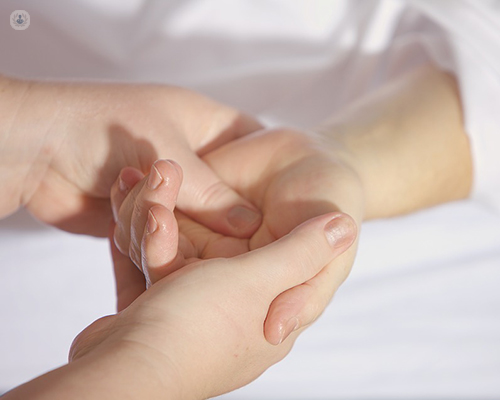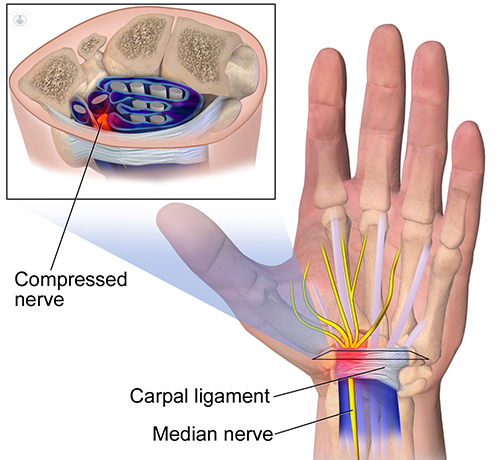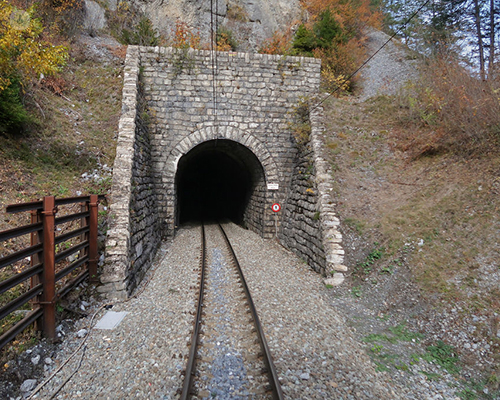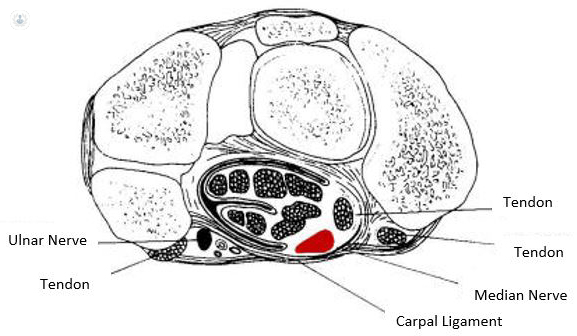Do I have carpal tunnel syndrome?
Escrito por:Carpal tunnel syndrome is a constellation of symptoms experienced when an important nerve, the median nerve, becomes pinched or squashed as it passes into the hand from the arm. Miss Tanaya Sarkhel, a leading orthopaedic surgeon of the Surrey Orthopaedic Clinic, explains the mechanics behind carpal tunnel syndrome.

What does it feel like?
Patients have told me how their hands can feel ‘dead’ or plagued with pins and needles, especially at night, which dissipates if they shake their hands as if to get life back into them. Others have noticed how first thing in the morning their fingers feel like sausages and it can take 10 to 15 minutes of really working at their grip to get them going. They might feel clumsy, dropping things or not being able to feel things like buttons and coins when they go to pick them up.
Why does it happen?
The nerve that is so important in supplying feeling to the thumb, index and middle finger and supplying power to the small muscles that work the thumb is called the median nerve. It starts off as a collection of individual nerve branches from the spinal cord, which come out between the vertebrae in the neck, then combine together to form one nerve in front of the shoulder that runs down towards the wrist and the palm of the hand.
When structures such as nerves and tendons cross a moving part of the body, they are often tied down. This keeps them running in smooth channels, rather than bowstringing or popping in and out of place and is helpful. However, these inelastic ‘seatbelts’ can generate problems of their own under certain conditions and, in the wrist, the seatbelt is the carpal ligament.

The carpal ligament forms the floor of the space we refer to as the carpal tunnel. It looks more like the railway tunnel it is compared with if we think of the hand placed palm downwards on the table. The tunnel arch is made up of the bones of the wrist (the carpal bones) and in the tunnel, travel flexor tendons to the fingers and the median nerve.
You can see that space here is at a premium and any extra call on this space can have an impact on the only structure that is squashable – the nerve.

When the nerve doesn’t have a comfortable amount of space, the signals it can send change. Tingling, a sensation of pins and needles, can be the first sign that the nerve is under pressure. As that pressure continues, the signals can stop altogether and this manifests as reduced sensation or numbness, in the fingertips first.
Experiencing nerve compression symptoms is very common, affecting between 3-6% of the adult population in the UK. Three times as many women as men are affected, with a suggested reason being that in the relatively smaller female skeleton, but with similar sized tendons and nerves as the men, there is less tolerance for space encroachment.
What sort of things take up extra space in the carpal tunnel?
The first time many women experience pins and needles in the hands is during pregnancy as a result of water retention. This makes the tissues boggy and waterlogged and, first thing in the morning, it can be a real challenge to get the fingers working. The good news is, this settles quite quickly after delivery and if it does happen during pregnancy, splints at night or even a steroid injection can help, without affecting the baby.
The majority of people come across symptoms in their fifties and sixties. This is when all our joints start showing signs of wear and tear and become a little bigger. You may notice that rings need resizing or watch straps need letting out a notch or two – this is a normal part of ageing and doesn’t mean anything sinister is happening. In the wrist, where there are so many small joints, it only needs each to get a tiny bit bigger for it to add up to a volume change in the tunnel. The tendons aren’t compressible but the nerve is and lets us know with the familiar symptoms.
Lumps and bumps that crop up elsewhere in the body can also occur within the carpal tunnel, so it is possible to have a ganglion (a blow-out bubble of fluid from a worn joint), a lipoma (fatty lump) or tenosynovitis (thickening and inflammation of tendon sheaths) causing a compression problem, but these causes are much less common than the impact of gradual wear and tear on the wrist.



